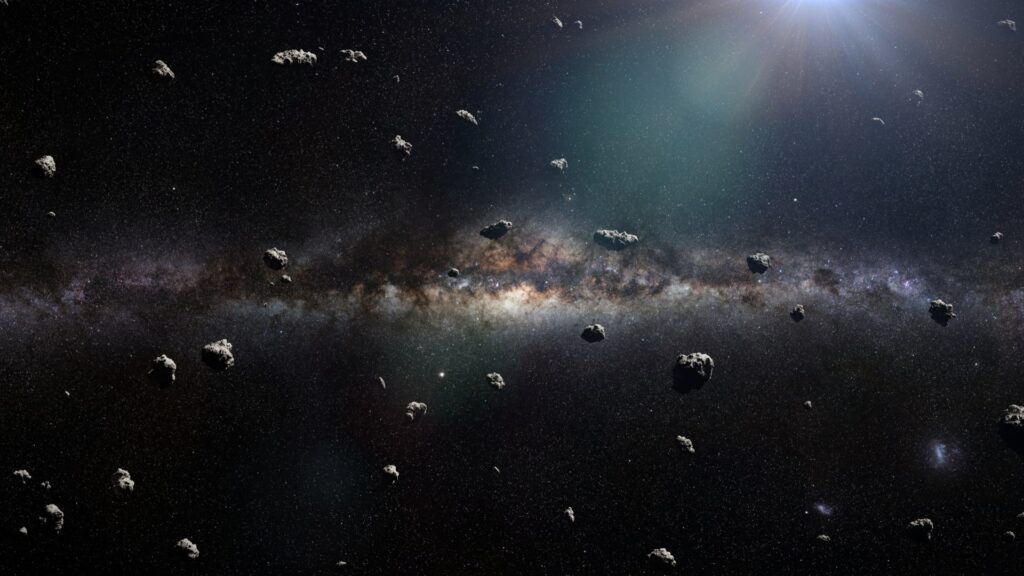

During the Cold War, the space race produced some of the greatest discoveries and achievements in the history of aerospace engineering. From the first Sputnik satellite in 1957 to the iconic landing on the Moon in 1969, the final frontier has enabled mankind to travel both physically and technically beyond previously imagined limits. Those discoveries continue to this day.
In 1977, NASA sent the twin space probes Voyager I and II to explore the celestial bodies of the solar system in unprecedented detail. Both probes successfully sent breakthrough images to Earth, revealing the secrets of Mars, Jupiter, Saturn, Neptune, and Pluto. However, the mission of the Voyager II was also to go beyond interstellar space, which, put simply, is the space between galaxies.
Having diverted its course over the last few years, NASA lost contact with Voyager II for several weeks following a command that tilted its antenna away from Earth. However, NASA was able to recover full control of Voyager II earlier than expected. This success story gives rise to a series of interesting questions: what about the abandoned satellites polluting Earth? What about space debris?
Considering the extraordinary distance that Voyager II has travelled over the years, NASA gathered some of its finest scientists to make an unprecedented effort to regain control of the probe. But how different can an operation to recover inactive or damaged satellites be?
The amount of space debris that now orbits Earth – more than 23,000 pieces exceeding the size of a tennis ball according to NASA’s official figures – poses a significant threat to both GSO and NGSO operational satellite systems. In practical terms, the risk of collision with functional systems is the biggest threat that space debris might represent. While NASA keeps track of most of the big pieces to calculate the likelihood of collisions with fully functional satellites and space stations, one can only wonder if there are any alternative proposals to mitigate this problem permanently.
A UK-based company named Astroscale is leading the way in this regard, supporting the conquest of space in a sustainable way by incorporating greener technologies into their satellite designs and infrastructure, reducing emissions as much as possible, and making sustainability a priority when developing new technologies. Astroscale is also pioneering innovative methods to clean outer space through Active Debris Removal (ADR), cutting-edge technology that is being employed to identify and capture debris orbiting our planet.
The UK Space Agency (UKSA) has assigned Astroscale with a series of missions to address space pollution issues, deploying fascinating technological innovations equipped with mechanical arms to remove as much debris from orbit as possible. This will reduce the risk of collision with other satellites, as well as prevent the larger pieces from re-entering Earth and causing a major incident on the planet’s surface. UKSA has assigned Astroscale this mission, known as COSMIC, which stands for Cleaning Outer Space Mission through Innovative Capture. It is exciting and promising to see the private and public sectors joining forces to address this issue before it becomes uncontrollable.
While this initiative is promising and can inspire similar endeavours from both the public and private sectors, there is a key variable that needs addressing: the regulatory aspect. Are current regulations in space policy flexible enough to enable such operations?
As this kind of mission becomes increasingly relevant for preserving the operability and safety of satellites and other space systems, the regulatory discussions regarding this technology will have to keep pace accordingly. Consequently, space debris and mitigation methodologies, including regulatory discussions behind missions like Astroscale’s, are expected to feature heavily during future ITU-R meetings.
While the public sector and national administrations will have an important role in allowing this technology to flourish and complete its mission, private initiatives will lead the way in shaping the regulatory aspect by advising the relevant authorities on measures that can embrace change while ensuring compatibility with existing systems.
Next time you look up to the sky, remember the dangers that are out there. While they may not be visible, only the appropriate technical and regulatory preparations can prevent space debris from having stark implications for us in the near future.
Access Partnership is committed to being part of this discussion, as we believe technology must be enabled by the appropriate regulations so that every corner of Earth can benefit. If you would like to learn more on this, please contact Sergio Rodriguez-Albarran at [email protected].

